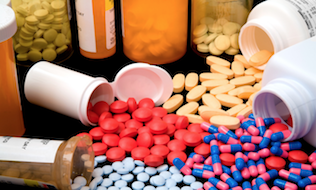

Counterfeit pharmaceutical drugs are a rising risk to Canadians as they’re appearing in brick-and-mortar pharmacies, rather than just on the street or online, according to a new report by public policy think tank the Fraser Institute.
It’s also a growing issue internationally and one that’s attracting the attention of policy-makers. But what does it mean for group benefits plans?
Counterfeit drugs can increase plan costs by harming member outcomes, noted the report, referring to negative side-effects, disease progression or changing treatment when the original, legitimate drug would have likely been effective. Further, plan sponsors could see increased costs due to absenteeism caused by the failure to gain adequate treatment and a subsequent rise in the frequency and length of disability leave.
Read: More measured approach to opioid prescriptions gaining traction: report
The report also found existing intellectual property and criminal laws to control this issue are “woefully inadequate.” On the regulation side, there’s no international standard for reporting and assessing the distribution of counterfeit pharmaceuticals. As such, traffickers rarely face charges that correlate with the gravity of the crime, noted the report.
Further, the complex nature of the pharmaceutical supply chain makes it more difficult to track spurious drugs. “The legitimate supply chain has many stages in which counterfeits can enter, starting with providing ingredients for manufacturing of the drug,” noted the report. The process means large amounts of chemical substances cross borders frequently and are often packaged and repackaged by secondary wholesalers, which creates an opportunity for fake drugs to enter the chain.
Read: The role of benefits plans in responding to the opioid crisis
Globally, there are significant challenges to measuring the magnitude of counterfeit drugs, but the report found several instances that demonstrate Canada isn’t immune to the problem. In 2016, Canada participated in Operation Pangea, an annual investigative operation to uncover counterfeit drug activity, for the ninth time. During the eight-day operation, more than 4,000 parcels were inspected and assessed at mail processing centres and border crossings, according to the Royal Canadian Mounted Police. Some 91 per cent of those parcels were either refused or seized for containing counterfeit or unlicensed health products. with a street value estimated at $2.51 million.
However, the report stressed that the appearance of counterfeit pharmaceuticals in legitimate pharmacies in Canada is rare as the bulk of the problem stems from online pharmacies where most products don’t originate in Canada and are often fake. “Nevertheless, there are documented cases in which counterfeit medicines made their way into licensed brick-and-mortar pharmacies,” the report noted.
“Canadians must be aware of the risks of counterfeit pharmaceuticals when purchasing prescription drugs from any venue,” said Kristina Acri, a senior fellow at the Fraser Institute, associate professor of economics at Colorado College and author of the report.
